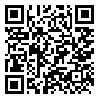Volume 5, Issue 1 (2024)
2024, 5(1): 52-70 |
Back to browse issues page
Download citation:
BibTeX | RIS | EndNote | Medlars | ProCite | Reference Manager | RefWorks
Send citation to:



BibTeX | RIS | EndNote | Medlars | ProCite | Reference Manager | RefWorks
Send citation to:
soltanzadeh zarandi M, raisi A. Guidance on Quantitative Assessment of the Quality of Open and Public Spaces in Communities. Urban Design Discourse a Review of Contemporary Litreatures and Theories 2024; 5 (1) :52-70
URL: http://udd.modares.ac.ir/article-40-73018-en.html
URL: http://udd.modares.ac.ir/article-40-73018-en.html
1- architecture department- faculty of art & architecture- shahid bahonar university , msoltan@UK.AC.IR
2- Graduated from shahid bahonar University of kerman
2- Graduated from shahid bahonar University of kerman
Abstract: (1092 Views)
Aims: numerous studies have delved into the intricate connection between the built environment of communities and human beings in various aspects. Researchers have shown a keen interest in understanding the social dynamics of residents and the role of open and public spaces. despite the abundance of research, a comprehensive consensus regarding theoretical foundations, measurement techniques, and evaluation tools is yet to be reached. This article aims to address this gap by proposing potential paths for future studies that seek to examine the relationship between public and open spaces and residents' individual and social indicators.
Methods: Using a descriptive-exploratory approach, theories and approaches that can be relied upon in studies in this field, as well as methods, variables, and components that can be used to evaluate the public and open spaces, are introduced and limitations are discussed.
Findings: The investigations have shown that a combination of several theories can form the basis for research that addresses the relationship between human beings and the public and open spaces, and models have also been introduced to interpret the relationship between these two variables. The study categorizes the variables of the public and open spaces into three distinct categories and presents indicators for measuring each category.
Conclusion: In conclusion, the evaluation of public and open spaces in a quantitative manner can be accomplished through diverse methods and approaches. The selection of a specific path, as outlined in this article, should be based on the objectives and research questions at hand.
Methods: Using a descriptive-exploratory approach, theories and approaches that can be relied upon in studies in this field, as well as methods, variables, and components that can be used to evaluate the public and open spaces, are introduced and limitations are discussed.
Findings: The investigations have shown that a combination of several theories can form the basis for research that addresses the relationship between human beings and the public and open spaces, and models have also been introduced to interpret the relationship between these two variables. The study categorizes the variables of the public and open spaces into three distinct categories and presents indicators for measuring each category.
Conclusion: In conclusion, the evaluation of public and open spaces in a quantitative manner can be accomplished through diverse methods and approaches. The selection of a specific path, as outlined in this article, should be based on the objectives and research questions at hand.
Article Type: Original Research |
Subject:
Quality of Urban Public Spaces
Received: 2023/12/19 | Accepted: 2024/04/16 | Published: 2024/05/30
Received: 2023/12/19 | Accepted: 2024/04/16 | Published: 2024/05/30
Send email to the article author
| Rights and permissions | |
 |
This work is licensed under a Creative Commons Attribution-NonCommercial 4.0 International License. |







